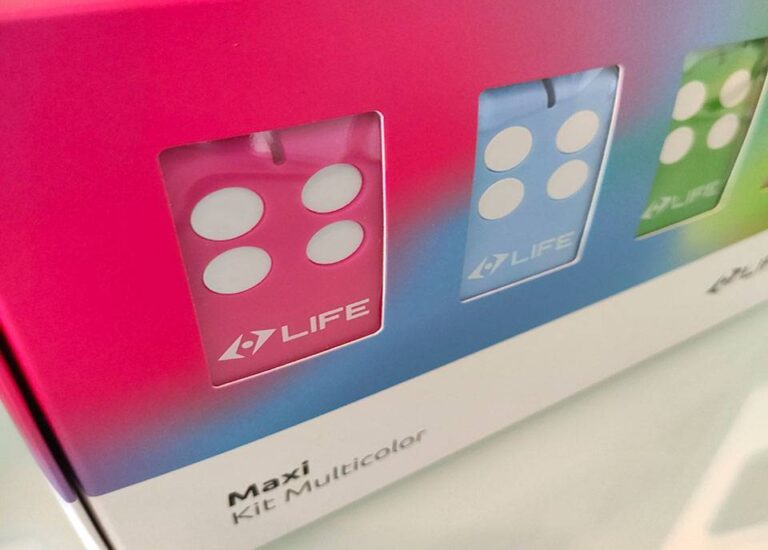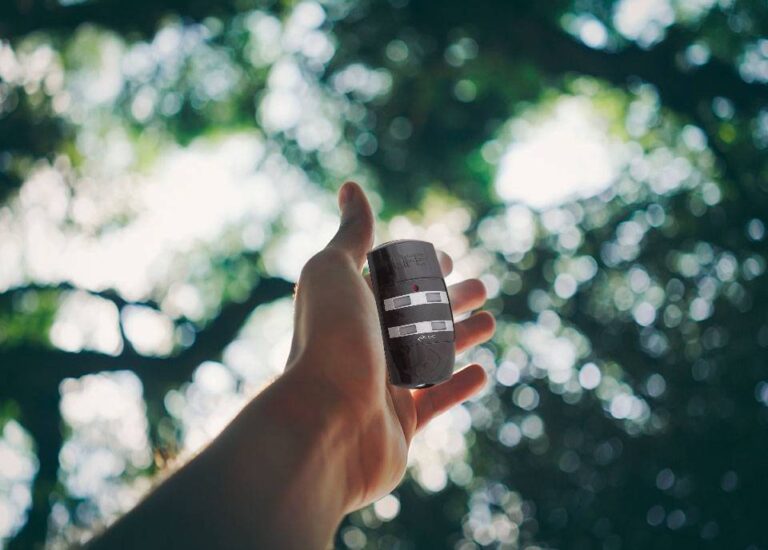The remote control for gates
Remote controls have become everyday objects that we use for many different purposes, so they are often taken for granted. We only realise how important they are when we lose them or they stop working.
Let’s try to understand a little more about these mysterious devices that have become so ingrained in our daily lives.
The history of the remote control
The remote control was invented by Nikola Tesla in 1898. Later, in 1930, Guglielmo Marconi turned on the public lighting in Sydney from his ship, the Elettra, which was located in Genoa, introducing the concept of long-distance remote control.
The use of remote controls for automation systems dates back to the 1970s, when remote controls went from being used in limited applications (industrial and military) to wider use.
The first remote controls were quite bulky, with frequencies generated by quartz (26–40 MHz) and, little by little, advancements led to the introduction of a code generated by a series of switches called dip-switches that always provided the same code (fixed code). Initially, there were only a few remote-control manufacturers and this meant that units from different companies, also competitors, were compatible.
Gradually they were recognised as being a very useful device for opening and closing the front gate or garage door of our homes.
This application led to a whole industry of automation systems for residential applications, gates, garage doors, and alike. These automation systems became possible through availability of remote-control technology.
With time, the technology changed and improved, remote controls became smaller (thanks to the miniaturisation of components) and became very distinct from one another and no longer compatible.
The development of “rolling-code” technology then began.
Manufacturers then started to produce more and more remote controls with a variable code, eliminating the possibility of generic copies as each manufacturer had by then developed a proprietary, patented rolling-code algorithm.
Let’s look at this aspect in more detail.
Types of transmission codes:
- FIXED CODE: this is the simplest type of code, with a length that varies from 1024 to one billion combinations. This is a unique code transmitted from the remote control and recognised by the receiver for a specific action. This type of code offers a low security level, as the remote control may easily be duplicated, yet it is very easy to use and maintain, due to the unique nature of the code.
- ROLLING CODE: this is a more secure code as it uses a series of progressive codes that change for each use. This means that the remote control and the receiver do not always communicate with the same code, as with fixed-code technology, but with changing codes that use a specific encryption method. Therefore it is very difficult to duplicate the remote control because once a code has been used, it is no longer valid for the receiver and therefore no longer works.
How do rolling-code remote controls work?
Let’s take a look at the characteristics and operation of dynamic or rolling-code remote controls.
- Normally, the code is composed of a 64-bit combination, rather than the 10 or 12 of a fixed code.
- For each transmission the code changes according to a mathematical algorithm and is never the same for two separate transmissions.
- Only a portion of the code (16 bits out of 64) remains fixed, and this is known as the serial number (SN).
- The remaining bits are transmitted in encrypted form or change continuously, according to the algorithm.
- The mathematical algorithm is generated by the encrypted part of the code, known as the manufacturer key: nobody except the manufacturer has access to its composition.
- The third part is known as the counter: this changes with every press of the button on the transmitter according to a sequence determined by the algorithm of the manufacturer key.
- The receiver must know the algorithm to be able to correctly decode the signal received.
- The receiver must have all of the serial numbers of the authorised remote controls in its memory, as well as the last position of the counter received from each. Receipt of a code with the memorised serial number but with a different counter position will be ignored, denying the user access.
Duplication of rolling-code remote controls
The aforementioned features make cloning of a remote control very complex.
In security terms, this means that:
- Every transmitter identifies each user.
- Together, the access rules of each building (communal, residential or work) may be implemented and managed with security and greater peace of mind for all users.
How to memorise a remote control
The memorisation methods for a LIFE Home Integration remote control vary depending on whether it is an autocode or rolling-code remote control.
With autocode, it is possible to copy two remote controls by placing them against one another and following a simple procedure, while rolling-code duplication must be performed via the control unit. In this case too, it only takes a few seconds to complete the task very easily.
Using the control unit is a clear advantage and constitutes a further security guarantee, as the owner or administrator’s authorisation is required, with controlled and equally secure procedures.
It is very important to highlight that, unlike any other remote controls on the market, memorisation using the DL control unit is almost immediate, thanks to a dedicated duplication button directly on the main screen of the control unit itself.
The ease with which LIFE Home Integration automation systems for gates, entrance doors and garage doors can be managed and programmed is the stand-out feature characterising the entire product range.
Once you have experienced the difference, you won’t look back!
LIFE remote controls
The LIFE Home integration remote control range is very broad and includes models to suit any requirement, with both autocode and rolling-code features.
However, the important novelty in the LIFE Home Integration transmitter range is the launching of LIFE Multicolor, a revolutionary product both in terms of its technical features and its distinctive shape and aesthetics.
With Maxi Multicolor, battery life is no longer a problem: you can happily use your remote control for years on end! This is a truly unique feature.
Battery replacement is as simple as all LIFE Home Integration products, in line with the company’s outlook and philosophy.
Capacity has also increased compared to previous models.
Furthermore, with Maxi Multicolor, LIFE Home Integration has catered for the whole family, so that everybody can have their own personalised and easily recognisable remote control, with various multicolour models available.
Trying out Maxi Multicolor is easy, you can use it for applications on LIFE Home Integration control units or with other systems: you can control systems for irrigation, theft-protection, lighting, opening and closing of blinds and many other uses that simplify your day-to-day tasks. This is all made very easy: simply use one of the receivers included in the kit selected from the three available.
All the advantages of LIFE Home Integration are just a click away.


